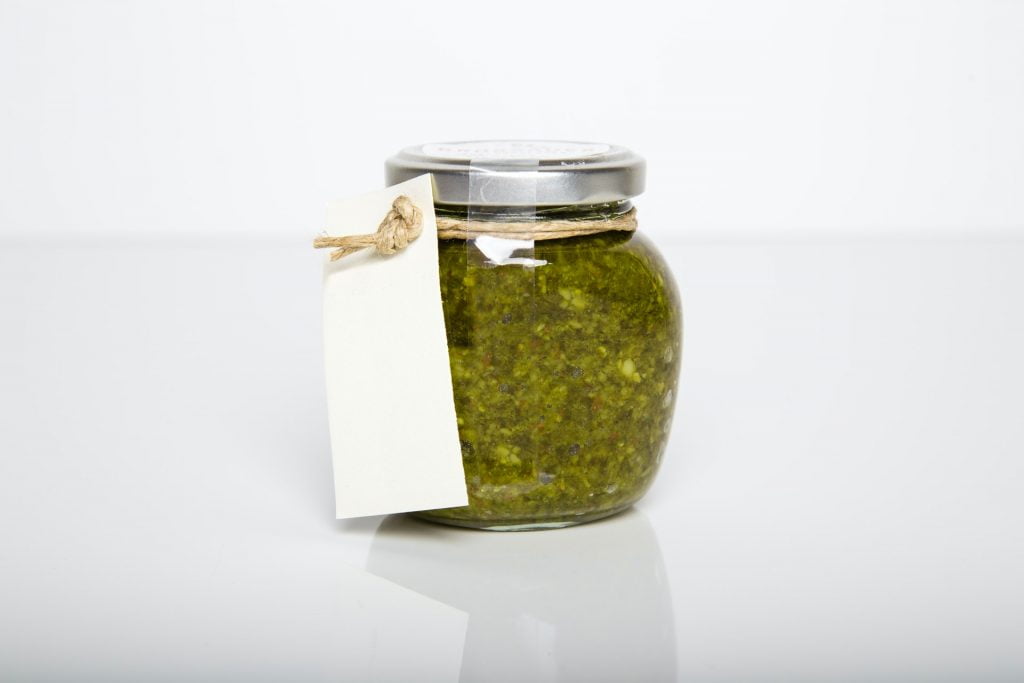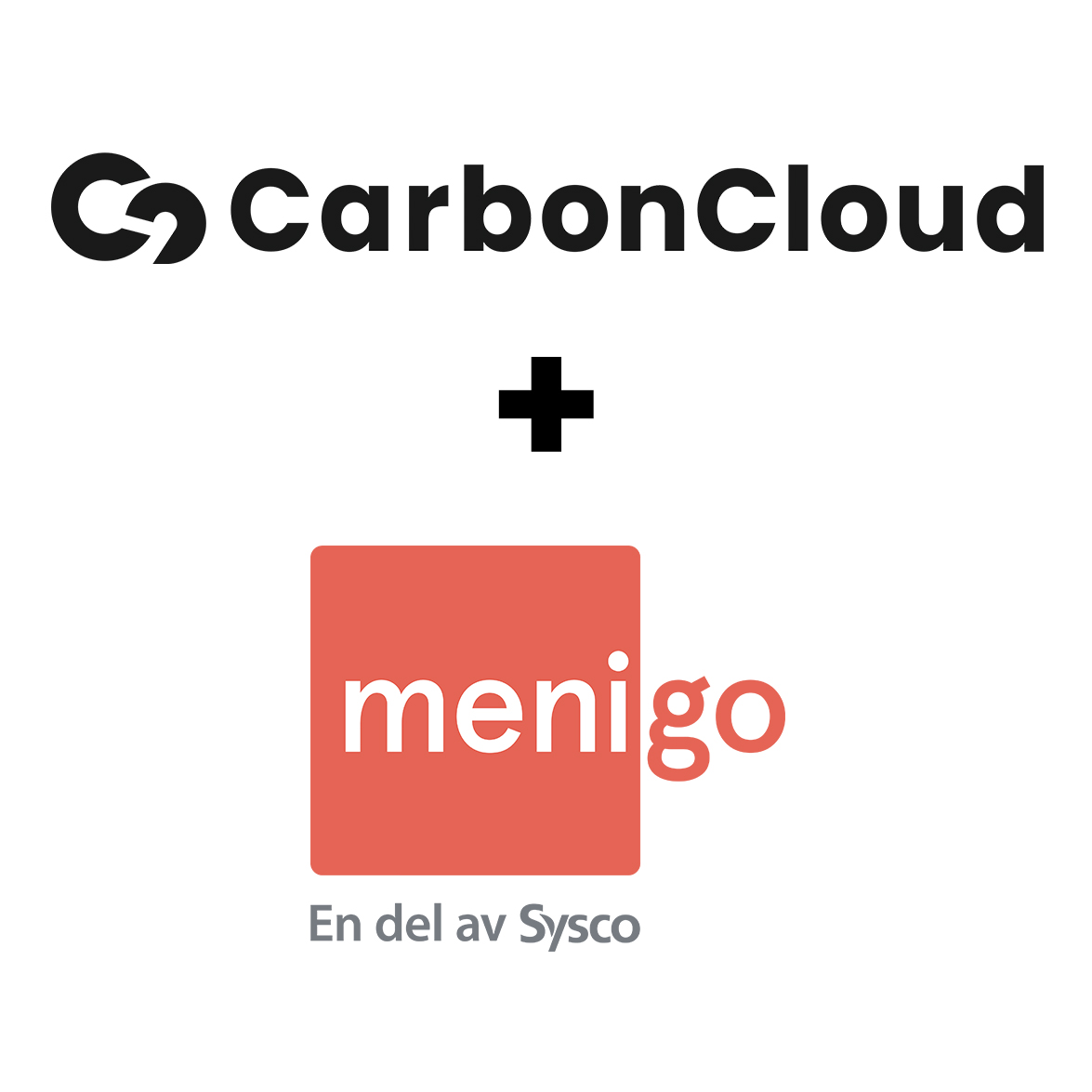The future of retail: The climate-transparent KnowVember store experience
Between November 2nd-6th the collective CarbonCloud heart was beating at the KnowVember pop-up store – the first climate-transparent store in the UK where consumers leave knowing the climate footprint of every product they bring home. Our Sales Executive, Fadi Taih, was there and came back with invaluable insights. Dive in!
Preparing for KnowVember was intense but getting there was something else! To start with, I had to get to London a day earlier, with the CarbonCloud t-shirt warm from the press. The sequence looked like it came straight out of a movie: run out of the office, pack like a maniac, kiss my darling goodbye, and run again to the airport. But stepping foot inside the pop-up store was something else – I completely forgot everything and just fed off the vibe there.

The first evening was the pre-launch event where all the climate-transparent brands proudly offering their climate-smart products in the KnowVember pop-up store gathered. We were joined by influencers who got the conversation going beyond the pop-up store. The energy and discussions were eye-opening; connecting with our UK-based customers face-to-face is unexchangeable; meeting other food brands with the same cause at heart makes everything we do feel more world-changing. And I have to admit… seeing all the CarbonCloud labels physically, on incredible products, in a cool store, was so motivating!
The KnowVember pop-up store opened its doors to the public on November 3rd. The next 4 days were like making direct eye contact with the future – You could safely call the price tag ‘climate tag’! Nevertheless, the consumers were very much from the present! I talk to food brands daily, I know their concerns, motives, and drive but it is not every day that I get the chance to talk to consumers interacting with our label.
Here are the most frequent and impactful consumer reactions I stuffed in my luggage:
Gimme numbers!
Consumers were not hung up on whether the number was high or low – and that is both great and mind-blowing. It is great because it is the action of climate transparency itself that consumers are demanding. It is mind-blowing because it puts our big ambitions –and ours includes both CarbonCloud and the food industry– in check.
Among other things, we are doing this for consumers and what they want is the mere number. Benchmarking this number is a bonus at this point, but the ability to compare a number to another is a must-have. They are at a point of maturity where they want to create their own understanding and be able to compare but firstly, they want to understand – not be told what is good or bad. What was their solution to this? A label on every product!
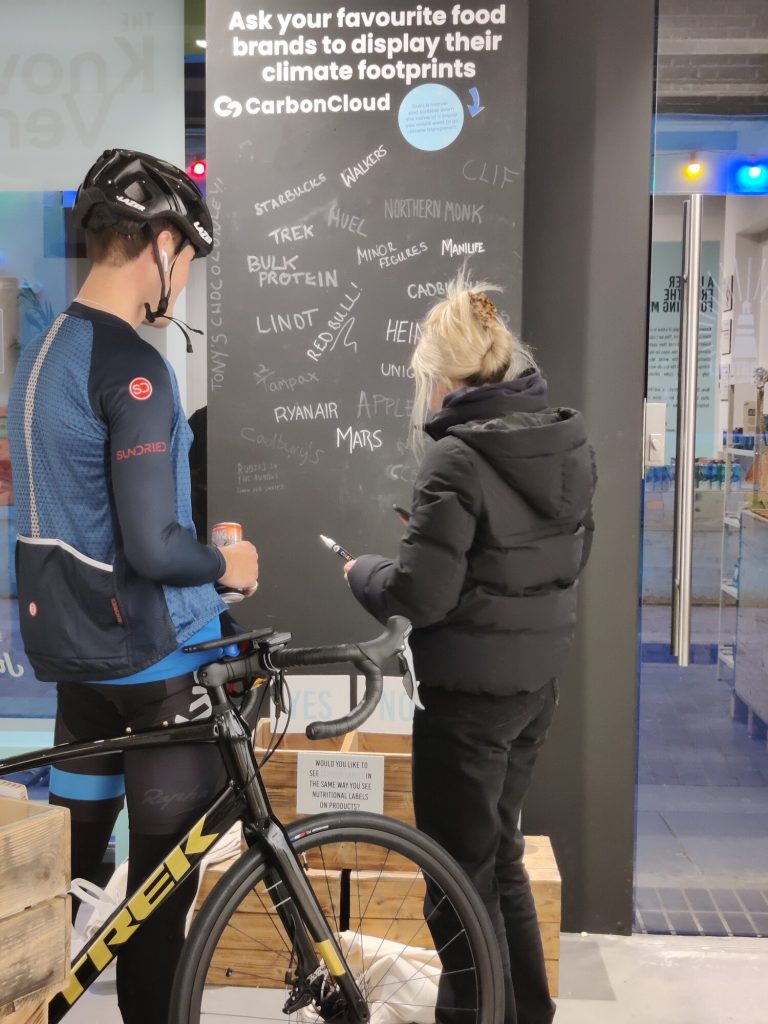
But they also read something else on the label. A consumer said:
What this tells me is that this brand works at being climate-transparent, they must understand the problem and they probably have a plan to do something about it in the next 10 years.
What do I bring to my meetings with food brands from this?
Take the responsibility and go climate-transparent – You can only win. It is untimely to be concerned whether the number is high or low. Consumers demand a number in every product so that they can understand faster all the great actions brands are taking for the climate.
What makes a climate footprint?
There is plenty of space to educate consumers about the climate impact of food products. However – there is incredible aptitude, curiosity, and frankly demand for this type of education.
I spoke with several consumers in the pop-up store and what surprised every single one of them was what the climate footprint of a food product is comprised of. A lot of them were interested in why we call it a climate footprint and were surprised to find out that CO2 is a small part of food production. Most of them thought that packaging played a huge role. I directed them to breakdowns of several climate footprints, went through a few of them in ClimateHub and they left smarter (and more confident!) knowing what makes an impact. One of them said:
I just turned very skeptic of brands that do campaigns like ‘less packaging, xx% less CO2’ – if you see the overall footprint, that’s a decrease of 5% tops!
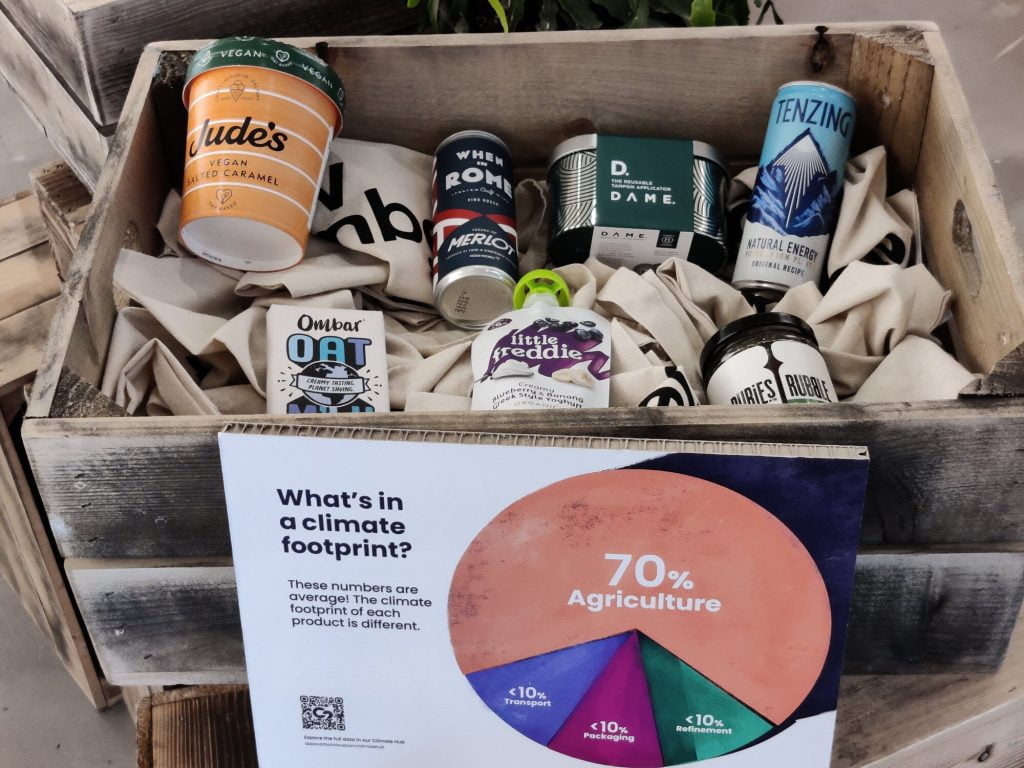
What do I bring to my meetings with food brands from this?
Educate your consumers about what makes up your climate footprints – providing this knowledge is your real competitive advantage! There are too few instances in their lives where they can leave feeling confident and the fact that you attach your brand to evoking this emotion is priceless.
Nutritional facts but make it #climate
The instant reaction of mentally placing a climate footprint label next to the nutritional facts table was really valuable for me – I understood the first impressions of our label, climate transparency, and how consumers interpret it. A consumer said:
If there were only 20 products out there with published nutritional facts, well, of course, it will be very unclear what’s good and what’s bad – but if every company went climate-transparent eventually consumers will understand what’s good for the climate.
So how is this done best? Again, think of nutritional facts! Consumers remarked that the label has the most impact when it is clearly visible at the front of the package. They wanted to find that information fast just like they can instantly tell from the label that a product is vegan. They also expect to have a breakdown of where the emissions come from on the backside – they expect companies to educate them on this journey.
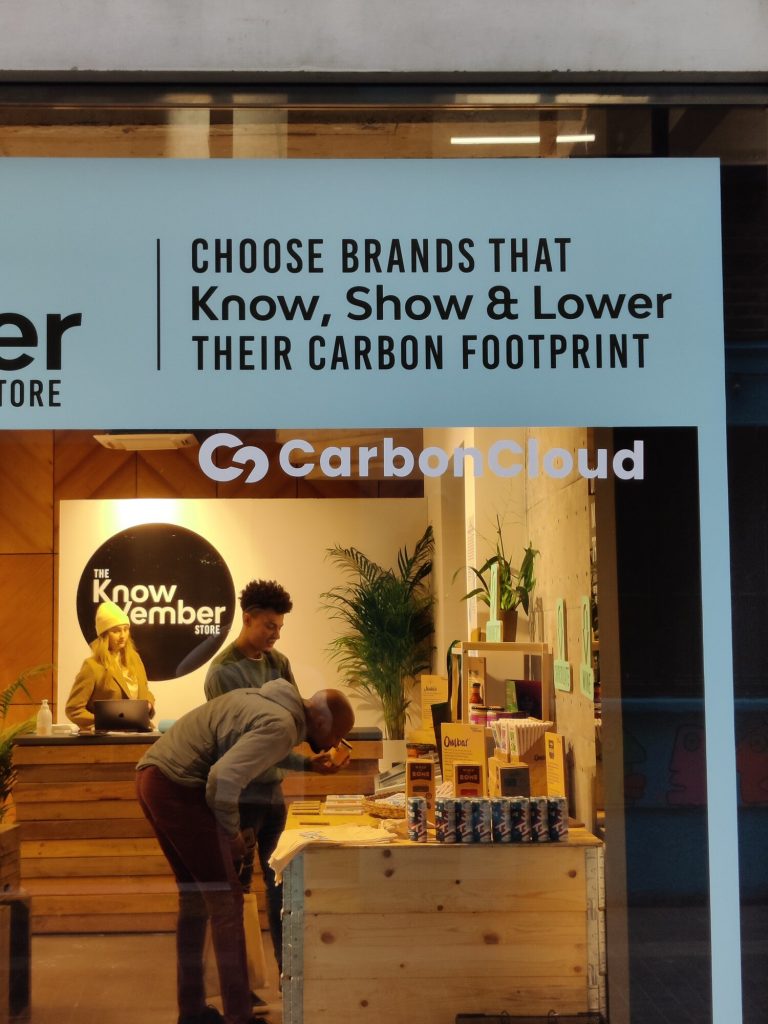
Moreover, consumers also stressed application and comparability. Much like the monetary price of a product, they want to know the climate price of the can, pouch, box, package in front of them as well as the climate price per kilo. This is what clearly informs them whether -and how much- they can slash their climate footprint and where the pains and the gains are.
What do I bring to my meetings with food brands from this?
Label on the front, climate footprint per kilo and per unit, and a breakdown of your footprint on the back of your package!
No pushback… like, at all.
The biggest surprise for me personally? There was no pushback! I was ready to meet a few deniers of climate change, I had my arguments sharpened about scope questions, methodologies, and they stayed in my toolbox ready to jump into a debate! Jokes aside, the demand for climate transparency was sincerely astonishing. Consumers are done debating, done being persuaded, done being motivated – they are ready and they want the hard facts.
What do I bring to my meetings with food brands from this?
More confidence in what we provide! Honestly, you snooze, you lose!
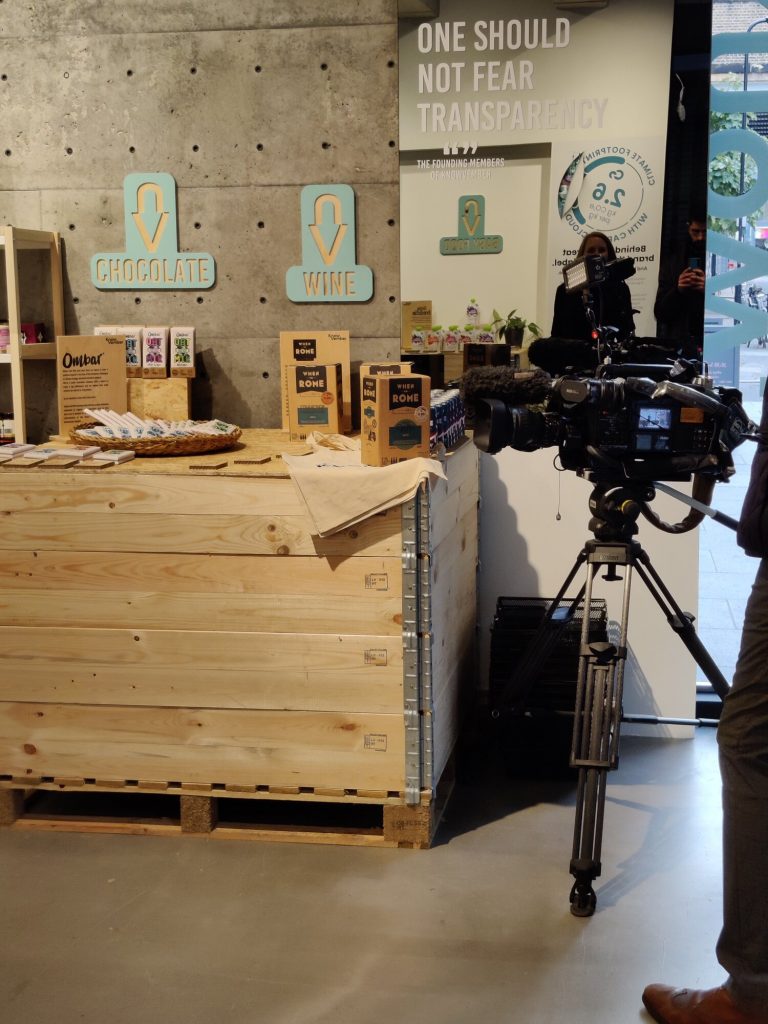
What made the KnowVember pop-up store initiative even more rewarding was that the media did not snooze on it either! With the cop26 and the public’s increasing disappointment of the coming promises, the media were eager to report on some real climate action. In fact, the initiative was so appreciated by the media that, in a week, the pop-up store reached 35+ million impressions. This only tells me -and everyone else involved in the movement- that the demand for climate-transparent products is undeniable.
What do I bring to my meetings with food brands from this?
After this point, if a brand asks me whether there is a real need or demand from this, I may even drop the call – if a food brand is not able to pick up on this loud demand for climate transparency, the train has left the station. But if I get the ‘how do we do this?’ question, after 4 days at the pop-up store, I am equipped with valuable insights from the consumers and media themselves.
I will linger on snoozing because this is exactly what I did on Sunday after I returned home. I no longer need to dream of a climate-transparent grocery store – I saw it in real life, I lived in it for four days and it felt both glorious and oddly natural. Next stop: The KnowVember Summit on November 29th in London. See you there!
Related Posts
How do deforestation emissions work in food?
Deforestation is one of those topics that, as actionable and measurable as it is, transcends business and numbers. For most of us, images of thinning forests, the faded shades of green over the Amazon
Consumer demand for sustainable products is growing: Here’s proof.
If we’ve met before you have probably heard from us that consumer demand for sustainable products is increasing. And what better place to study this trend in-depth than where the action happens: Gro
🇺🇸 FTC Green Guides: From theory to practice
While the publication of the UK’s Green Claims Code has made some noise in the industry, the Green Guides from the US Federal Trade Commission (FTC) have been around quietly and humbly since 1992. O
Sysco Subsidiary Menigo Applies CarbonCloud Machine Learning to 23,000 products
Menigo launches its largest climate data initiative ever in a new partnership with CarbonCloud. The startup’s climate intelligence platform calculates the footprint of the entire product portfolio w



